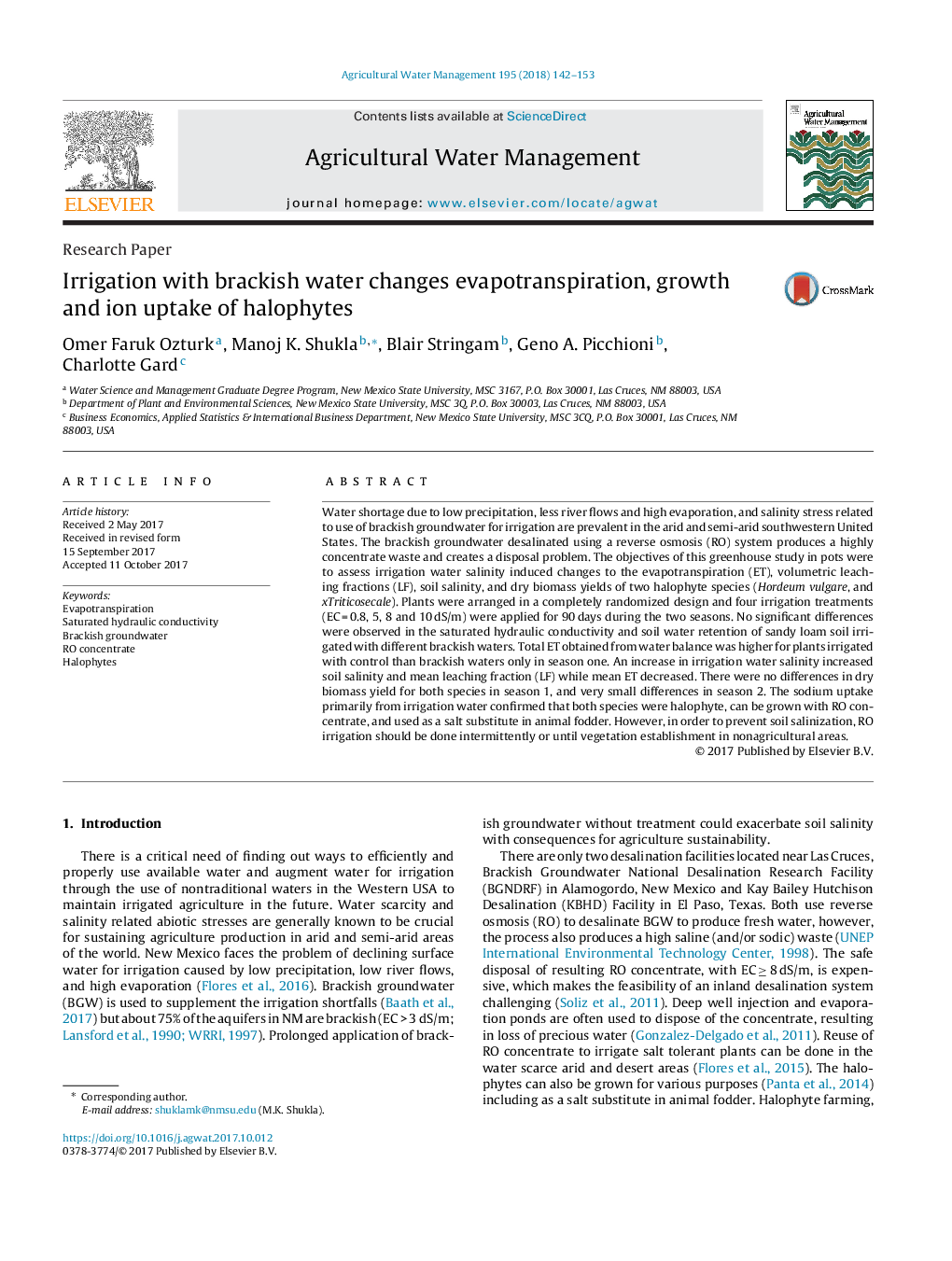| Article ID | Journal | Published Year | Pages | File Type |
|---|---|---|---|---|
| 5758244 | Agricultural Water Management | 2018 | 12 Pages |
Abstract
Water shortage due to low precipitation, less river flows and high evaporation, and salinity stress related to use of brackish groundwater for irrigation are prevalent in the arid and semi-arid southwestern United States. The brackish groundwater desalinated using a reverse osmosis (RO) system produces a highly concentrate waste and creates a disposal problem. The objectives of this greenhouse study in pots were to assess irrigation water salinity induced changes to the evapotranspiration (ET), volumetric leaching fractions (LF), soil salinity, and dry biomass yields of two halophyte species (Hordeum vulgare, and xTriticosecale). Plants were arranged in a completely randomized design and four irrigation treatments (ECÂ =Â 0.8, 5, 8 and 10Â dS/m) were applied for 90Â days during the two seasons. No significant differences were observed in the saturated hydraulic conductivity and soil water retention of sandy loam soil irrigated with different brackish waters. Total ET obtained from water balance was higher for plants irrigated with control than brackish waters only in season one. An increase in irrigation water salinity increased soil salinity and mean leaching fraction (LF) while mean ET decreased. There were no differences in dry biomass yield for both species in season 1, and very small differences in season 2. The sodium uptake primarily from irrigation water confirmed that both species were halophyte, can be grown with RO concentrate, and used as a salt substitute in animal fodder. However, in order to prevent soil salinization, RO irrigation should be done intermittently or until vegetation establishment in nonagricultural areas.
Keywords
Related Topics
Life Sciences
Agricultural and Biological Sciences
Agronomy and Crop Science
Authors
Omer Faruk Ozturk, Manoj K. Shukla, Blair Stringam, Geno A. Picchioni, Charlotte Gard,
